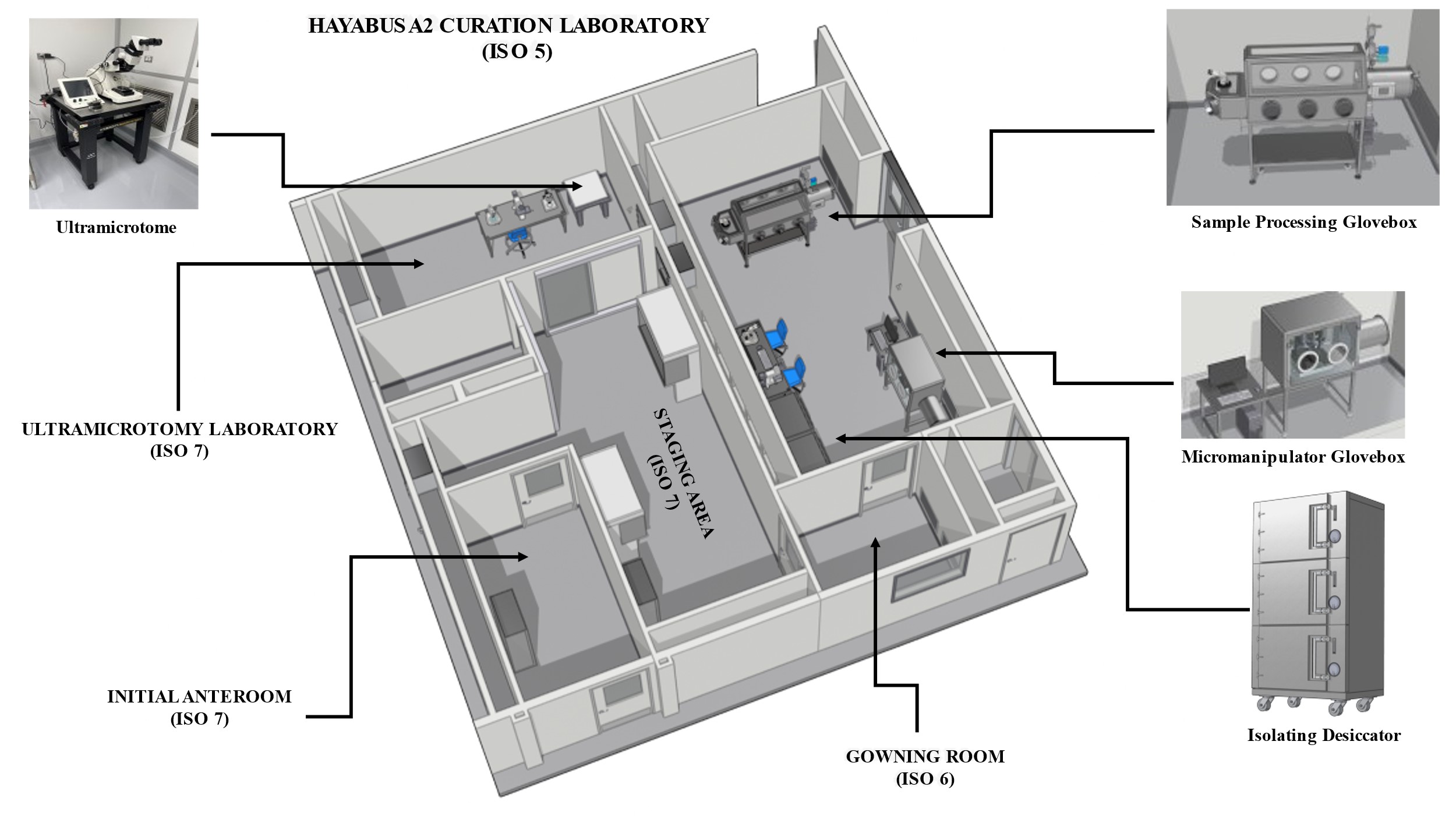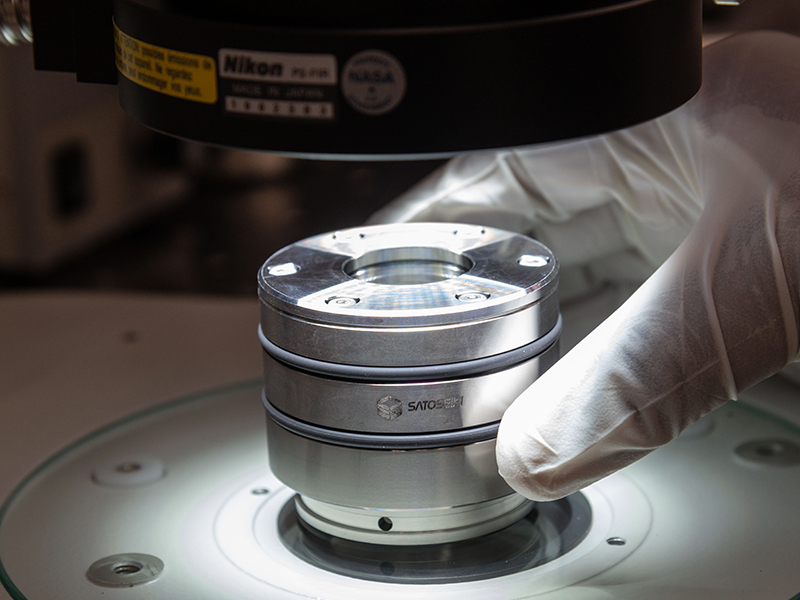Hayabusa2 Sample Collection
Asteroids are made up of rocky material that is left over from the formation of our solar system [1]. This material holds the key to unlocking information about the history of the planets and our Sun. Hayabusa2 is a spacecraft that collected samples from asteroid Ryugu (a carbonaceous asteroid that is rich in water, carbon and organic compounds [1]) and was launched by the Japan Aerospace Exploration Agency (JAXA). Samples were returned to Earth in December 2020, and 10 percent of the collected material is currently housed in a state-of-the-art laboratory at NASA Johnson Space Center (JSC) dedicated to Ryugu material [1]. Because these samples are so precious and rare, it is important to keep them free from Earth contamination.
A canister containing a sample of asteroid Ryugu is transferred from JAXA to NASA. Credit: NASA/Robert Markowitz.
In March of 2019, a massive construction project began to provide curation facilities to meet the needs of the incoming Ryugu collection for Hayabusa2. The Hayabusa2 Curation facilities at JSC will provide laboratories to safely house the precious asteroid samples as well as facilities to manipulate samples, perform sample preparation and process samples into and out of the labs for future studies by the scientific community.
The Haybusa2 facilities include a Curation Laboratory (ISO 5), the ultramicrotomy laboratory (ISO 7), and a thin section laboratory (not a cleanroom). To maintain cleanliness levels necessary for these lab spaces, quarterly to monthly Balazs organic and inorganic sampling is conducted on a regular basis, which began before the construction project, to monitor the cleanliness levels in the new labs that will house the asteroid samples. These new facilities feature a Ruuvi (Grafana) monitoring system that measures temperature, humidity, and pressure of the lab suite. This is a small puck shaped sensor that sends signals to the Grafana cloud, where the data can be plotted and set up on dashboards within the lab suite. These sensors are easy to set up and install, and they run off a cell battery that is good for 3-5 years before needing replacement. This system can deliver text messages and emails to the appropriate personnel when values fall outside of set limits. In addition to the monitoring system, this new lab suite features viewing windows from several different locations and sliding motion censored doors. We have obtained some state-of-the-art equipment to outfit the lab spaces (desiccators, microscopes, ultramicrotome) and are in the process of outfitting the suite with additional items such as: nitrogen gloveboxes, additional desiccators, micromanipulators, etc.

Hayabusa2 Curation Facilities at Johnson Space Center
The Hayabusa2 samples provided to NASA by JAXA include 23-millimeter sized grains and 4 containers with finer material. Samples will be stored in a nitrogen desiccator and separated into nitrogen sealed transfer containers inside of a nitrogen glovebox. Small Ryugu particles will be handled and prepared (e.g., ultra-thin sections for scanning electron microscopy (SEM) or transmission electron microscopy (TEM)) using an Axis Pro micromanipulator and Leica EM UC7 ultramicrotome. Analyzing samples at the atomic scale will provide greater insight into the origins of the solar system and the ingredients that could have given rise to life on Earth. All the curation preparation for these sample collections is essential to ongoing research and efforts to understand our solar system, both now and for future generations.
References:
[1] Cranford, N., and Ramji, N. (2021, December 6). NASA Receives Special Cosmic Delivery of Asteroid Sample from Japan. NASA. Retrieved May 2, 2022, from https://www.nasa.gov/feature/nasa-receives-special-cosmic-delivery-of-asteroid-sample-from-japan

